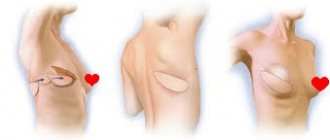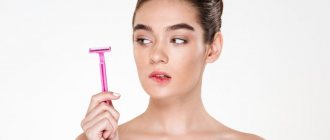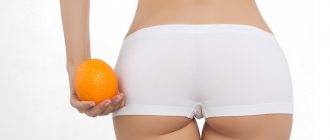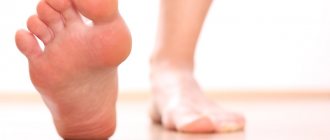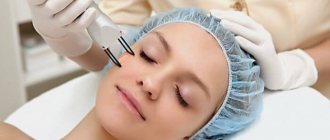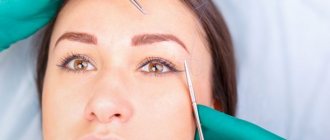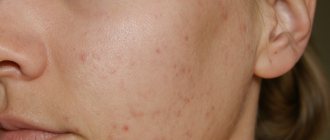An inverted nipple does not protrude above the surface of the areola or falls into the breast instead of forming a protrusion. The areola is the round area of pigmented skin that surrounds the nipple.
Inverted nipples are also called sunken, flat, recessed or inverted nipples. Some people are born with this anatomical feature, while others develop it later in life.
Inverted nipples can occur in both men and women. Some people have only one nipple that is indented.
Inverted nipples do not usually indicate a health problem. In addition, they do not always complicate breastfeeding, since during this process the baby can completely capture the areola.
However, with a strong inversion, women may encounter serious difficulties when feeding, and sometimes the child’s consumption of milk from the mother’s breast becomes completely impossible.
In this current article, we will look at the reasons for the development of inverted nipples, and also explain how they can affect feeding and breast sensitivity. We will also discuss the available treatments for this condition.
How normal is it to have inverted nipples?
Between 2 and 10% of women have at least one inverted nipple
Inverted nipples are not an anatomical abnormality and are usually neither a cause nor a consequence of serious medical conditions. In general, doctors do not think that people need any treatment in such cases.
However, therapy may be needed if the cause of sunken nipples is a serious health problem, such as inflammation or cancer in the breast.
According to American experts, from 2 to 10% of women have at least one inverted nipple. Men can also develop this feature.
Some people find that inverted nipples make breastfeeding difficult. In this case, stimulation may cause partial straightening of a flat or recessed nipple, and if the nipple is severely indented, the baby may need to capture the full areola during feeding. Some women find that their nipples become less recessed into their breasts after breastfeeding.
Surgical method of treatment
This method of breast correction is suitable for girls who are just planning to become a mother and feed the child on their own, or for those who simply do not like the shape of their nipples.
Modern medicine makes it possible to perform surgery without damaging the milk ducts. This method is resorted to only when it was not possible to pull out flat nipples using any of the above methods.
Shape correction surgery does not require hospitalization and is performed using local anesthesia. A prerequisite for the operation is to examine the patient and identify the cause of the inversion. In the process of preparing for surgery, the doctor must tell you what to expect from the procedure and what the result will be.
Although a hospital stay is not required after surgical correction, the woman will need to undergo regular dressing changes. If any complications occur, you should immediately report them to your doctor.
How are inverted nipples treated?
Sometimes people express a desire to change the shape of their nipples due to difficulties that may arise with breastfeeding or for aesthetic reasons.
To solve the problem, modern medicine offers the following methods.
Hoffman technique
This technique has been successfully used since the fifties of the last century. It includes nipple stretching exercises that can be performed at home:
- place two thumbs on either side of the base of the nipple, but not outside the areola;
- press your fingers into the breast tissue, and then, holding the pressure, move your fingers away from each other;
- change the position of your fingers and repeat the procedure.
Such manipulations should gradually lead to the nipple coming out. However, the time required to obtain a satisfactory result varies from person to person.
People can perform Hoffman exercises during periods when they want to achieve elevation of the nipples above the areolas. It is difficult to predict how long this effect will last, so it is better to perform the described manipulations at least once a day. With regular exercise, your nipples will come out more often.
However, it should be pointed out that the effectiveness of the Hoffman technique has not been scientifically proven. In addition, each person's breasts have their own characteristics, so for some people nipple stretching exercises do not help at all.
Suction devices
The modern market offers suction devices that are designed specifically for correcting inverted nipples. People wear most of these accessories under their clothes for a long time.
Such products are sold under various names, for example:
- nipple formers;
- nipple correctors;
- nipple pullers;
- nipple extractors.
The operating principle of suction devices is based on pulling the nipple into a small cup. This process stimulates the nipple and causes it to emerge from the breast tissue. When used over a long period of time, suction devices help loosen the nipple tissue, allowing the nipple to remain extended for a longer period of time.
The effectiveness of suction devices has not been scientifically proven, so they may also not lead to the expected result. However, most suction devices are inexpensive, so this method is definitely worth trying.
Piercing
Nipple piercings sometimes also cause nipples to emerge from the breast. This happens because the jewelry that is inserted into the piercing site can support the nipple in an upright position.
Types of inverted nipples and their diagnosis
Modern plastic surgery considers two types of inverted nipples:
- Inverted nipples that are caused by external physical force or trauma are called inverted nipples. This pathology is physiological in nature and does not require specific treatment. Usually, under the influence of erotic caresses or breastfeeding, hidden nipples independently take on a normal shape.
- Tightly inverted or primary inverted nipples are another matter. This is mainly a congenital pathology in which the nipples do not extend beyond the level of the areola. This disease requires special treatment using surgical or non-surgical methods.
Diagnosis of this pathology begins with examination of the mammary gland. A woman can determine the presence of inverted nipples on her own, but she should immediately seek advice from a specialist.
Upon further examination, the main question for the mammologist will be to conduct a differential diagnosis of the independent occurrence of inverted nipples from the manifestation of an oncological process in the patient’s mammary gland. To do this, an ultrasound of the mammary gland, mammography, and, if necessary, a cytological examination of breast tissue and discharge from the damaged nipple are required.
Only after receiving a certain negative oncological prognosis, the woman is faced with the question of treating inverted nipples.
Why do inverted nipples occur?
You should see a doctor if one or both nipples suddenly recede into your breast
Some people are born with recessed nipples. In medical practice, this condition is usually described by the term “congenital inversion.” However, sometimes the nipples retract into the breasts later in life, and in such cases, doctors call the inversion acquired.
Acquired inversion may indicate the development of underlying medical problems, such as inflammation of the breast tissue. People should see a doctor if one or both nipples suddenly recede into the breast.
Medical conditions that can cause nipple inversion include the following:
- mastitis, that is, an infection of the mammary glands;
- mammary duct ectasia, which is an abnormal dilation of the milk ducts in the breast;
- abscess under the areola;
- complications after breast surgery;
- chest injuries;
- gynecomastia;
- tuberculosis;
- holoprosencephaly, chronic infections and monocytosis;
- mammary cancer.
Breast cancer usually causes other changes in the breast. If symptoms such as swelling, peeling of the nipples, or nipple discharge occur, women should be examined by a doctor.
Shaping the nipple before feeding
Correcting nipple retractions during pregnancy is not recommended, as the shape may change again after childbirth or have a bad effect on the baby.
If the doctor leading the pregnancy sees the need for traction, you should follow all the rules and instructions of the specialist. Pay special attention to the choice of a shaper: let him be comfortable psychologically and physically. If a woman experiences discomfort or pain, stop using the device immediately.
To prepare the breasts for feeding, special exercises are performed, but all techniques must be gentle and agreed with the attending physician.
Stages of nipple inversion
There are three stages of nipple inversion. Belonging to one of the stages depends on the degree of confluence and mobility of the nipples.
- Stage 1. The person can easily pull out the nipple, which then remains in an extended position for some time. Stimulation and breastfeeding also help the nipple emerge from the breast.
- Stage 2: The person can pull out the nipple, but not as easily. After stretching, the nipple tries to return to the breast. This condition may cause difficulties during breastfeeding.
- Stage 3: The person cannot extend the nipple. Even if this can be done, the nipple immediately returns to its original position. With this condition, women may experience serious difficulties while breastfeeding.
Breast pump and syringe
A good nipple puller is a breast pump. In addition, it helps women avoid stagnation of milk in the glands.
There are both electric and manual devices. In the case of a mechanical apparatus, pulling is carried out using a special pear. The operating principle of both devices is the same. A special flange is applied to the nipple, which should completely cover the areola. Afterwards, the woman should turn on the breast pump (electric) and let the device do its job. You should choose a power that does not create a feeling of discomfort.
When using a breast pump not only for the purpose of expressing, but also as a device for pulling out the nipples, it should be taken into account that it stimulates milk production.
All actions aimed at stretching the nipples are recommended to be carried out after childbirth
The milk collected using this method can be immediately given to the baby from a bottle.
The device can be replaced with a regular medical syringe. To use it, you need to cut off the edge on the side where the needle is to be inserted. To prevent uneven cut edges from damaging the skin, it is recommended to pull out the piston and insert it from the reverse side. You should use syringes whose barrel diameter corresponds to the size of the nipple.
After applying a homemade traction device to your chest, you need to carefully begin to pull its piston until slight discomfort appears. When removing the syringe, the pressure created by it needs to be slightly relieved by moving the piston in the opposite direction, and the nipple will come out easily.
The homemade device must be kept clean at all times. It is washed with hot water not only before use, but also after use.
Effect on breastfeeding
Inverted nipples usually do not become a serious problem when feeding a baby.
While inverted nipples can be challenging, babies can usually feed from them by grasping the areola and pressing it against the roof of their mouth. That is, in most cases, with sunken nipples, women retain the ability to breastfeed.
In addition, it should be noted that nipple stimulation often causes partial nipple release. To achieve this effect, nursing mothers can use a variety of techniques.
Some women find that their inverted nipples begin to emerge gradually during pregnancy and breastfeeding.
Recommendations from plastic surgeons
The patient must be aware that after removal of the tumor, a scar remains. But when using laser equipment, it is invisible. And after a while it completely merges with normal skin.
When the location of the formation is the mammary gland, surgical treatment should be carried out with extreme caution. The patient must be of legal age. This is due to the fact that during this period the milk ducts open. Therefore, the doctor first determines which nipple the milk ducts do not pass to. And only after determining which nipple is the accessory nipple can surgery be performed.
The latest technologies in this area are laser removal of the additional nipple and cryodestruction. These therapies have little effect on the body, but are very effective.
In the process of laser removal, a beam is directed at the object of operation, irradiating it for some time. Then it is removed, and a small wound appears at the site of formation. It forms a scab that must not be picked off. It will disappear on its own after a certain time. After the procedure there is no such scar left as after surgery.
Cryodestruction does not cause any particular harm to the patient. During the operation, the nipple is exposed to liquid nitrogen, that is, very low temperatures. A small wound appears at the site of formation. She may discharge clear fluid for two weeks after the procedure. This is considered to be the norm.
Causes
10% of women have inverted nipples, the reasons may be the following:
- Heredity and genetic predisposition for some congenital diseases (Franz-Aftimos, Weaver, Venik syndromes). Pathology of chromosome 2q37. At the same time, there is also mild debility, there may be autism, a symptom of the “Olympic forehead”, underdevelopment of the wings of the nose, abnormal thinness of the upper lip.
- Pallister syndrome (syndrome of abnormalities of the ulna, sweat, genital and mammary glands). Apocrine glands may be absent altogether, and short stature is common. The pathology is rare, in which the TVKhZ gene suffers and mutates.
- A similar condition can occur as a result of congenital disorders of glycosylation (CDG). With this pathology, there are facial deformities, improper distribution of fat throughout the body, and inverted nipples.
Other causes of this condition include:
- short retaining fibers and underdevelopment of the milk ducts themselves;
- abnormalities of the genital organs;
- constantly wearing a narrow and small bra to create the appearance of small breasts or the wrong model;
- injury to the mammary gland;
- malignant tumors of the mammary glands;
- papillomas of the milk passages;
- fatty cyst of the mammary gland, fat necrosis, mastopathy.
In addition, prolonged breastfeeding, age-related breast sagging, gynecomastia, pregnancy, tuberculosis, and previous purulent mastitis contribute to nipple retraction.
Indications for use
A girl can resort to using a corrector to improve sexual sensations, because prominent nipples are often much more susceptible to external influences. In addition, measures to correct this intimate part of her body can give a woman confidence during sexual intercourse, which will also have a beneficial effect on the quality of sexual relations.
In addition to the above reasons, there is one more reason that can be an important reason to correct your nipples with the help of a corrector. A nipple shape corrector may be needed to improve breastfeeding: not every baby will be able to grasp a concave or flat nipple, which means there is a risk that the baby will independently refuse breast milk. For many women, this can become a real tragedy, and in order to prevent it, they pull out their nipples in every possible way.
Is there any danger?
Some perceive this without much concern and do not pay attention, others are concerned about the aesthetic appearance, and some are worried that their partner is not aroused by the sight of such nipples when their breasts are exposed.
But the real problem is that after childbirth there is a problem with feeding the baby, who finds it difficult to suck out mother's milk. In such cases, treatment is required, since pumping for new mothers in such cases is often painful, and the fact that the baby is not able to suck the milk completely can lead to stasis and cause mastitis. In addition, this can lead to the development of malocclusion in the child in the future.
In other situations, inverted nipples usually do not pose a danger if they are not accompanied by inflammation and disease of the mammary gland. With inflammation, swelling of the areola occurs, followed by maceration. Germs can accumulate in the depressions.
